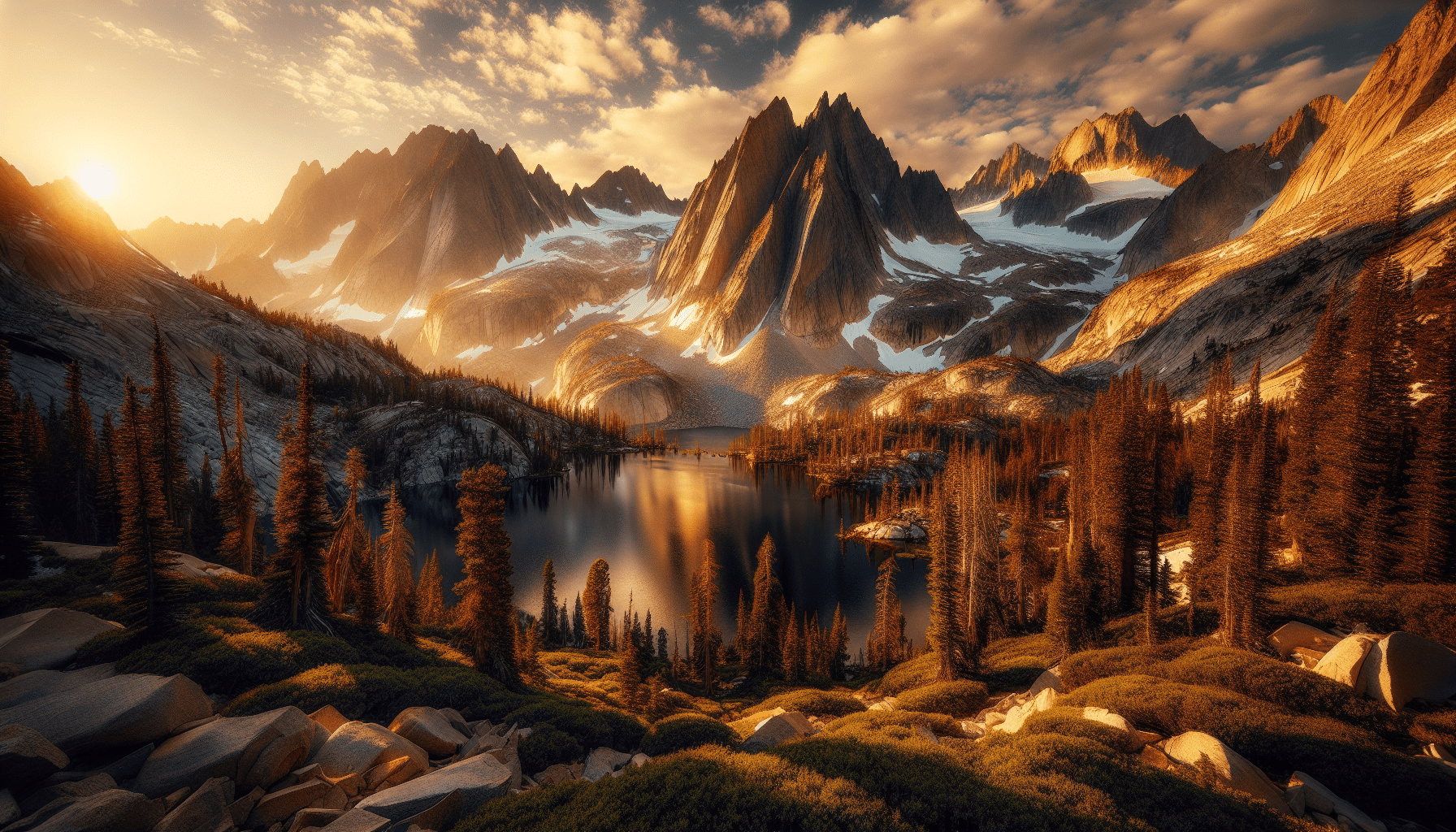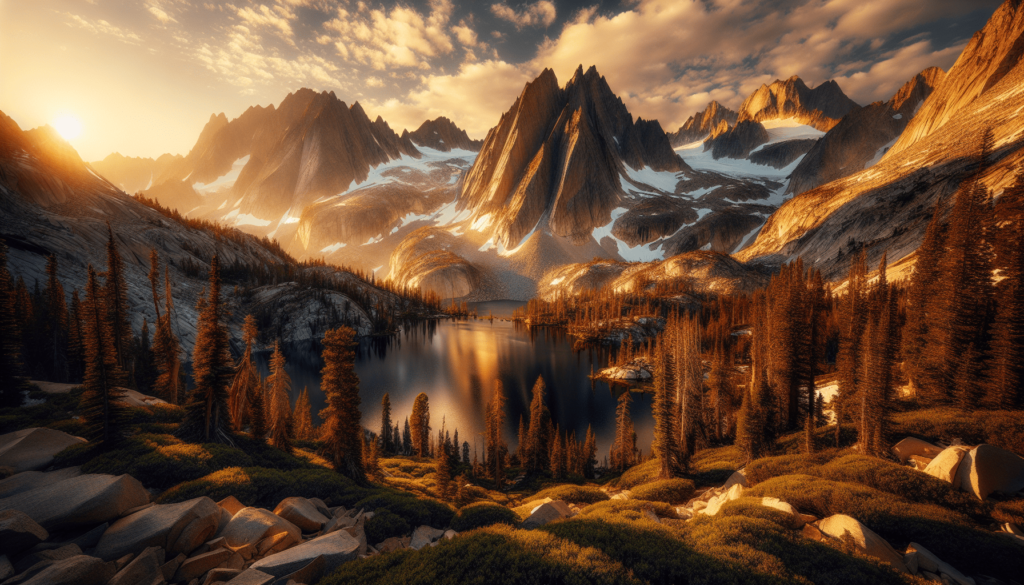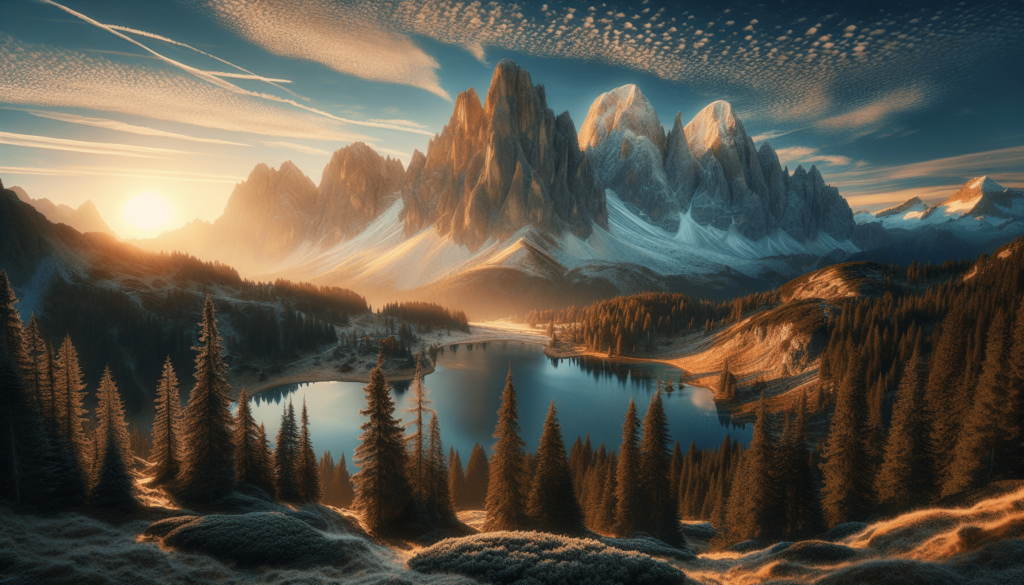Your cart is currently empty!
Exploring the Magic of Mountain Landscapes

What draws you to the mountains? Is it the fresh air, the stunning views, or perhaps the sense of adventure? Whatever it is, mountain landscapes hold an allure that captivates many of us. Let’s unravel the magic behind these majestic formations and what makes them so special.
The Geology of Mountains
Mountains are not just a bunch of rocks piled together; they have a fascinating story to tell. They are formed through a variety of geological processes, including:
- Tectonic Activity: Most mountains rise as a result of tectonic plates colliding. This pressure causes the Earth’s crust to buckle and fold, creating peaks.
- Volcanic Activity: Some mountains are result of volcanic activity. When magma from beneath the Earth’s crust escapes to the surface, it can create volcanoes, which may emerge as breathtaking mountain ranges.
- Erosion: Over millions of years, wind and water wear down mountains, shaping their features. This erosion creates stunning valleys and canyons, adding to the beauty of the landscape.
You might find it interesting to know that the type of rock in a mountain can tell a lot about its formation. For instance, granite mountains present a different appearance and texture compared to limestone ones, each revealing a unique story of how they came to be.
Types of Mountain Ranges
Mountains usually form in long lines called ranges. There are several types of mountain ranges, including:
| Type | Description |
|---|---|
| Fold Mountains | Formed by the folding of the Earth’s crust. |
| Fault Block Mountains | Created through fault lines where sections of rock have lifted. |
| Volcanic Mountains | Resulting from volcanic activity. |
| Residual Mountains | Remaining landforms after erosion. |
Understanding these categories helps you appreciate the diverse landscapes. For example, the Himalayas are fold mountains, showcasing the incredible forces of the Earth’s tectonic plates.
The Biodiversity of Mountain Ecosystems
Mountains are not just great to look at; they are also home to a variety of ecosystems. The varied elevations and climates create unique microhabitats that support diverse plant and animal life.
Plant Life
The plant life on mountains changes with altitude.
- Low Elevation: At lower altitudes, you’ll find lush forests filled with evergreens and deciduous trees. These areas often have rich biodiversity.
- Mid Elevation: As you ascend, you encounter scrubbier vegetation, including bushes and shrubs. The climate becomes harsher, and trees become less dominant.
- High Altitude: Near the summit, you might find alpine tundra, where only a few hardy plants can survive, like mosses, lichens, and some grass species.
Each of these zones serves a distinctive role in the ecosystem. For instance, trees at lower altitudes play critical roles in preventing soil erosion, while alpine plants help to retain moisture high up in the mountains.
Animal Life
Just as the vegetation changes with altitude, so does the wildlife. Different species have adapted to their specific environments.
| Elevation Level | Notable Animal Species |
|---|---|
| Low Elevation | Deer, bobcats, and various bird species |
| Mid Elevation | Mountain goats, eagles, and marmots |
| High Altitude | Snow leopards, mountain hares, and nimble pikas |
You might appreciate the unique adaptations animals have made to survive in these environments. For example, the snow leopard has thick fur and a powerful build, enabling it to thrive in the snowy, rocky terrain of high-altitude mountains.

The Importance of Mountain Conservation
Mountains are significant not only for their beauty but also for their role in the global ecosystem. They are the source of many rivers and provide essential resources, such as clean water, timber, and minerals.
Threats to Mountain Ecosystems
Sadly, all is not well in mountain landscapes. Many threats put these vital ecosystems at risk. Some include:
- Climate Change: The rising global temperatures are altering habitats, leading to species migrations and even extinctions.
- Deforestation: Trees are often cut down for agriculture and development, resulting in habitat loss and increased erosion.
- Pollution: Air and water pollution can degrade these pristine environments and endanger the wildlife that call them home.
It’s crucial to recognize these threats so you can contribute to efforts aimed at preserving these breathtaking places. Even small steps, like reducing your carbon footprint or supporting conservation programs, can make a difference.
Conservation Efforts
Many organizations and individuals are working tirelessly to conserve mountain ecosystems.
- Protected Areas: Establishing national parks and reserves helps safeguard wildlife and natural habitats.
- Sustainable Practices: Promoting eco-tourism and sustainable farming helps ensure that local communities can thrive without damaging the environment.
- Restoration Projects: These initiatives aim to restore damaged ecosystems, replanting native trees and rebuilding habitats for wildlife.
You can play a part in supporting these efforts by choosing eco-friendly travel options or donating to conservation organizations. Everyone counts, and your involvement can contribute to a healthier Ecosystem.
The Cultural Significance of Mountains
Mountains hold deep meanings for various cultures around the world. They often symbolize strength, endurance, and spirituality.
Spiritual Significance
For many indigenous cultures, mountains are considered sacred places.
- Pilgrimages: People journey to mountain tops as part of spiritual practices, seeking solace and a connection with nature.
- Mythology: In various cultures, mountains are often associated with gods or important figures. For instance, Mount Olympus in Greek mythology is considered the home of the Greek gods.
Understanding these cultural connections enriches your experience when visiting mountainous regions and promotes respect for the traditions of those who live there.
Artistic Inspiration
The stunning landscapes of mountains have inspired countless artists, writers, and musicians throughout history.
| Art Form | Inspiration Source |
|---|---|
| Literature | Mountains often serve as metaphors for personal journeys. |
| Paintings | Artists often strive to capture mountain beauty in their works. |
| Music | Many songs reflect the awe and majesty of mountain landscapes. |
You might find that immersing yourself in the beauty of mountains can spark your own creativity. Whether you’re writing, painting, or crafting music, the tranquility of mountain scenery often fuels artistic expression.

Adventure in Mountain Landscapes
If there’s one thing mountains offer, it’s adventure. Whether you are looking for a challenging hike, skiing down slopes, or simply enjoying tranquil picnic spots, mountains provide a playground for outdoor enthusiasts.
Hiking and Trekking
Hiking is often regarded as the most accessible way to experience mountains.
- Day Hikes: Perfect for beginners or families looking for a short challenge. Many trails offer stunning views with relatively low effort.
- Multi-day Treks: For the more experienced hiker, trails like the Appalachian Trail or the Pacific Crest Trail offer more challenging options that immerse you in nature for days at a time.
When preparing for a hike, it’s essential to plan appropriately. Make sure to check trail conditions, weather forecasts, and have the right gear to enhance your experience and safety.
Climbing
For those seeking a greater thrill, mountaineering and rock climbing provide the challenge and adrenaline rush you might be looking for.
- Technical Climbing: Requires specialized skills and gear, typically undertaken by experienced climbers.
- Bouldering: A form of climbing on small rock formations or artificial rock walls without the use of ropes or harnesses—perfect for beginners and those looking for a more relaxed approach.
If you’re new to climbing, consider taking a class or joining a guided group to build your skills and confidence in a safe environment.
Skiing and Snowboarding
During the winter months, mountains transform into snowy wonderlands for skiing enthusiasts.
- Ski Resorts: Most come equipped with facilities for all skill levels, including lessons for beginners.
- Backcountry Skiing: If you’re looking for more adventure, exploring outside the ski resorts offers the chance to discover untouched powder and pristine landscapes.
Regardless of your skiing level, respect the mountain environment and ensure you’re aware of avalanche safety. This way, you can focus entirely on enjoying the breathtaking descents.
The Scenic Beauty of Mountain Landscapes
One aspect of mountains that always leaves an impression is their breathtaking beauty. Whether you’re standing at a peak, gazing across valleys, or enjoying the sunset, mountains provide some of the most stunning views you can experience.
Seasonal Changes
Watching how mountains transform with the seasons can be mesmerizing.
- Spring: Snow melts, wildflowers bloom, and animals emerge from hibernation.
- Summer: A vibrant palette of green foliage, crystal-clear skies, and exciting wildlife activities.
- Fall: The landscape bursts into color as leaves turn brilliant shades of orange, yellow, and red.
- Winter: A serene white blanket covers the mountains, creating a peaceful and magical atmosphere.
Each season offers a different appeal, allowing you to experience mountains in unique ways throughout the year.
Viewing Points
Sometimes, simply standing at a viewing point can take your breath away. Here are some popular options:
| Location | Description |
|---|---|
| Scenic Overlooks | Well-marked spots offering panoramic views. |
| Ridgetops | Offers a perspective that can be quite dramatic. |
| Mountain Lakes | Reflective surfaces providing stunning visual experiences. |
Always have your camera ready—while photos may never fully capture the beauty of what you see, they can help you preserve the memory of unforgettable experiences.
Conclusion: Embrace the Mountain Experience
Mountains represent a beautiful intersection of nature, adventure, and cultural significance. Whether you’re trekking up a trail, skiing down slopes, or simply soaking in the views, each moment spent in their presence can lead to a deeper appreciation for the world around you.
So, when will you next venture into the mountains? The magic of these landscapes awaits, ready to inspire and invigorate you. As you embark on your next mountain adventure, carry with you the understanding of their complex ecosystems, cultural connections, and the sheer beauty that continues to mesmerize people across the globe.